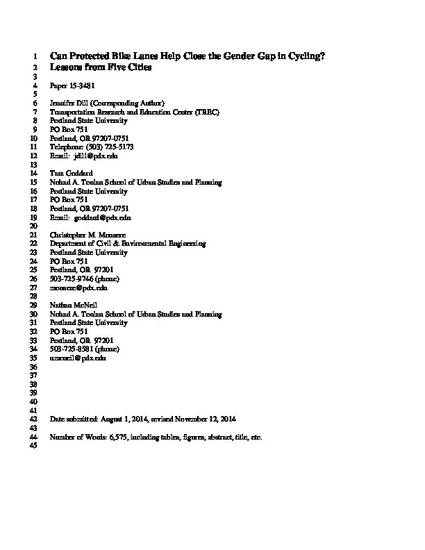
- Bicycle lanes,
- Transportation planning,
- Cycling -- Route choice
Even in areas with increased levels of bicycling, there remains a significant “gender gap” in bicycling in the United States, in contrast to many other countries with high rates of bicycling. The primary objective of this paper was to explore whether protected bike lanes could help reduce the gender gap. To do so, the authors used survey data from a comprehensive evaluation of protected bike lanes in five large U.S. cities (Austin, TX, Chicago, IL, Portland, OR, San Francisco, CA, and Washington, DC) that included survey responses of 1,111 intercepted bicyclists and 2,283 residents. Both men and women overwhelmingly felt that the lanes increased their safety while riding in them. On several measures of safety and comfort, women bicyclists using the lanes did have significantly more positive associations with the protected lanes than men. A survey of residents, which included people who do and do not bicycle, revealed that women generally feel less comfortable than men bicycling on roadways, though the addition of some physical separation to a striped bike lane, does increase stated levels of comfort to a level that might increase rates of bicycling. Overall, women were also more likely to indicate that the new protected lane had increased their overall levels of bicycling. Analysis of the demographics of the intercepted bicyclists revealed differences between men and women that point to the challenge of increasing women’s rates of bicycling, primarily that the women intercepted bicycling were much less likely than men to have children.
Available at: http://works.bepress.com/christopher_monsere/49/

This is the author's manuscript version of a paper that was submitted for presentation and publication to the 94th Annual Meeting of the Transportation Research Board January 11-15, 2015.